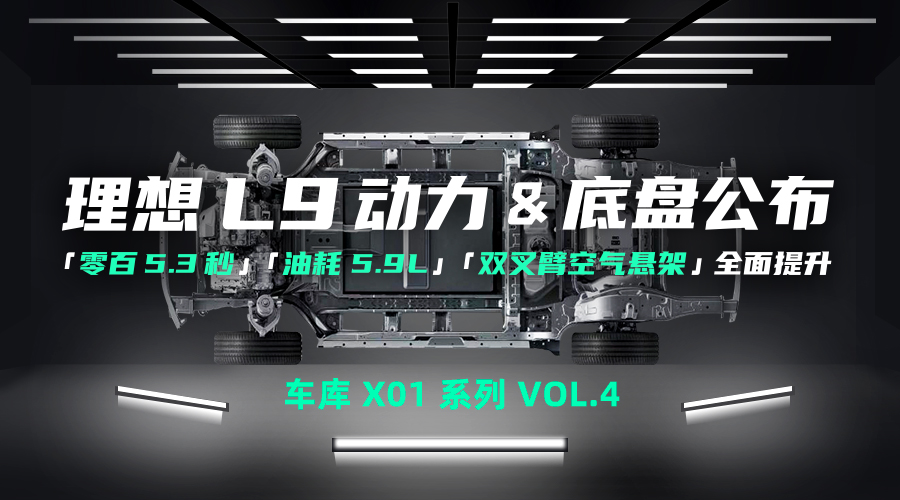The third official disclosure of the Ideal L9 was released as scheduled today, including three parts: self-developed power system, new chassis, and self-developed controller.
Compared with the controversial appearance before, the voices in the group about these three major topics released today are relatively consistent. It can be seen that the L9 basically meets everyone’s expectations in these aspects.
Next, we will further interpret the official information.
More Power, Lower Energy Consumption
In August last year, Ideal Auto and Xinchuan Power jointly established “Sichuan Ideal Xinchuan Technology Co., Ltd.”, with Ideal Auto holding 51% of the shares. According to the official information, the joint venture will develop a new generation of range extenders for Ideal’s full-size car models.
For those who are not familiar with Xinchuan Power, it is introduced here briefly that its parent company is a joint venture between Huachen Auto and Wuliangye Group. The enterprise users of Xinchuan Power include BMW Group, Huachen Group, Dongfeng Auto, Zhengzhou Nissan, FAW Geelyn, Changan Leopard, Geely Auto, Golden Dragon Auto, etc.
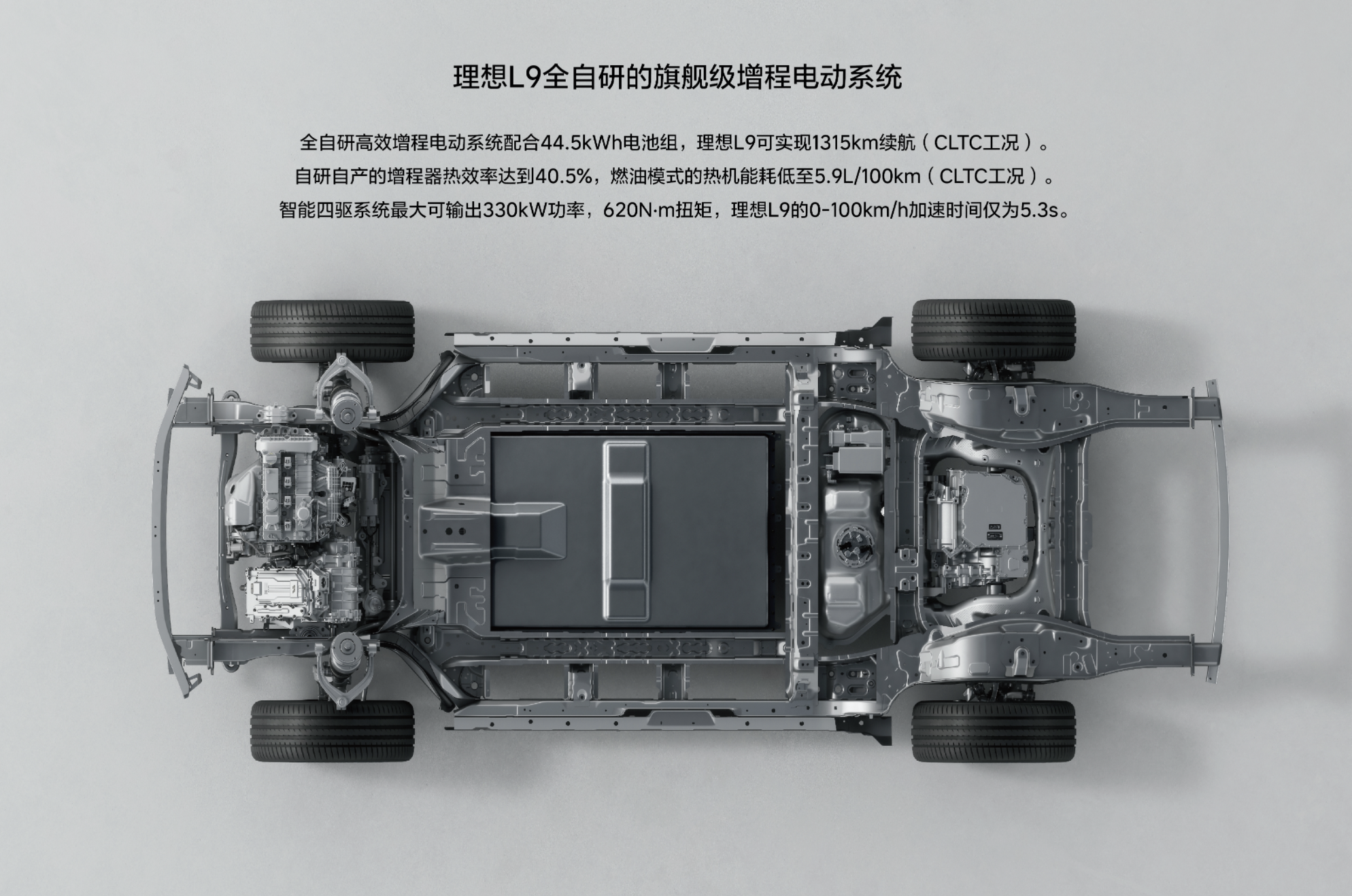
This newly developed range extender by the joint venture also appeared in the power information of the Ideal L9 officially announced today. The new range extender has a highest thermal efficiency of 40.5%, which is significantly improved compared to the Dong’an 1.2 T three-cylinder range extender on the Ideal ONE. In addition, it can be seen from the figure that the range extender of L9 has four cylinders. After the addition of an extra cylinder, the low-speed jitter of the range extender theoretically will perform even better.
The range extender is only responsible for generating electricity, and the power still depends on the motor. The L9 uses a four-wheel drive system composed of two permanent magnet motors front and back, with a maximum output power of 330 kW, which is equivalent to 449 horsepower, and the corresponding zero-to-hundred acceleration time is 5.3 seconds. This is a good level among full-size SUVs.
However, the most worth-noting data in the whole figure is fuel consumption, which is 5.9 liters per 100 kilometers in fuel mode for the Ideal L9. Regarding this data, some in-depth analysis can be made.
How did 5.9 L fuel consumption come about?
The reason why this fuel consumption is emphasized is that the Ideal L9 is larger in size and more powerful compared to the Ideal ONE, and energy consumption should increase accordingly, but the energy consumption of the L9 is even lower. This is something that appears counterintuitive.
But since the effect has been achieved, it can be deduced that Ideal L9 definitely made targeted optimizations in several major areas that affect the energy consumption of extended-range electric vehicles. Next, we can systematically talk about our opinions based on several pieces of information.
External factors, resistance optimization
Starting with resistance, the three points to focus on should be wind resistance, tires, and weight.## The ways Ideal L9 reduces energy consumption
External factor, air resistance
Regarding air resistance, the L9 adopts a closed front face with a design more similar to that of electric cars. It places heat dissipation and air intakes in the lower half of the front face and has a variable air intake grille. Another small detail is that the L9 uses a hidden door handle design. Furthermore, the L9’s wheel hub design has a low air resistance design, although it is uncertain how much effect these details will have.
As for the second point, the L9’s tire size is 265/45 R21, wider and with a larger hub than that of the Ideal ONE, making it less favorable for lowering energy consumption. However, given Ideal’s previous cooperation with Michelin, it is likely that the L9 will use custom low rolling resistance tires.
Regarding the third point, the L9’s size makes it heavier than the Ideal ONE. However, Ideal has done a lot of work on lightweighting, with Li Xiang himself stating that the L9 uses a large amount of aluminum in its body, and the official chassis diagram shows an aluminum alloy full frame subframe.
Internal factor, energy efficiency improvement
The power system also affects energy consumption, with three primary components: the range extender, the electric powertrain, and the range extender system control strategy.
As for the range extender, the L9 uses a more efficient full-range extender with higher thermal efficiency, which is easy to understand.
Concerning the electric powertrain, the L9’s dual-motor power has increased from the current Ideal ONE’s 245 kW to 330 kW. The electric powertrain system for the L9 is a joint venture between Ideal and Huawei’s HiSilicon, which improves power efficiency, integration, volume, and energy consumption.
According to Ideal personnel in the Ideal L9 Interest Group, the L9 equipped with this electric powertrain system may have even lower energy consumption in pure electric mode than the current Ideal ONE.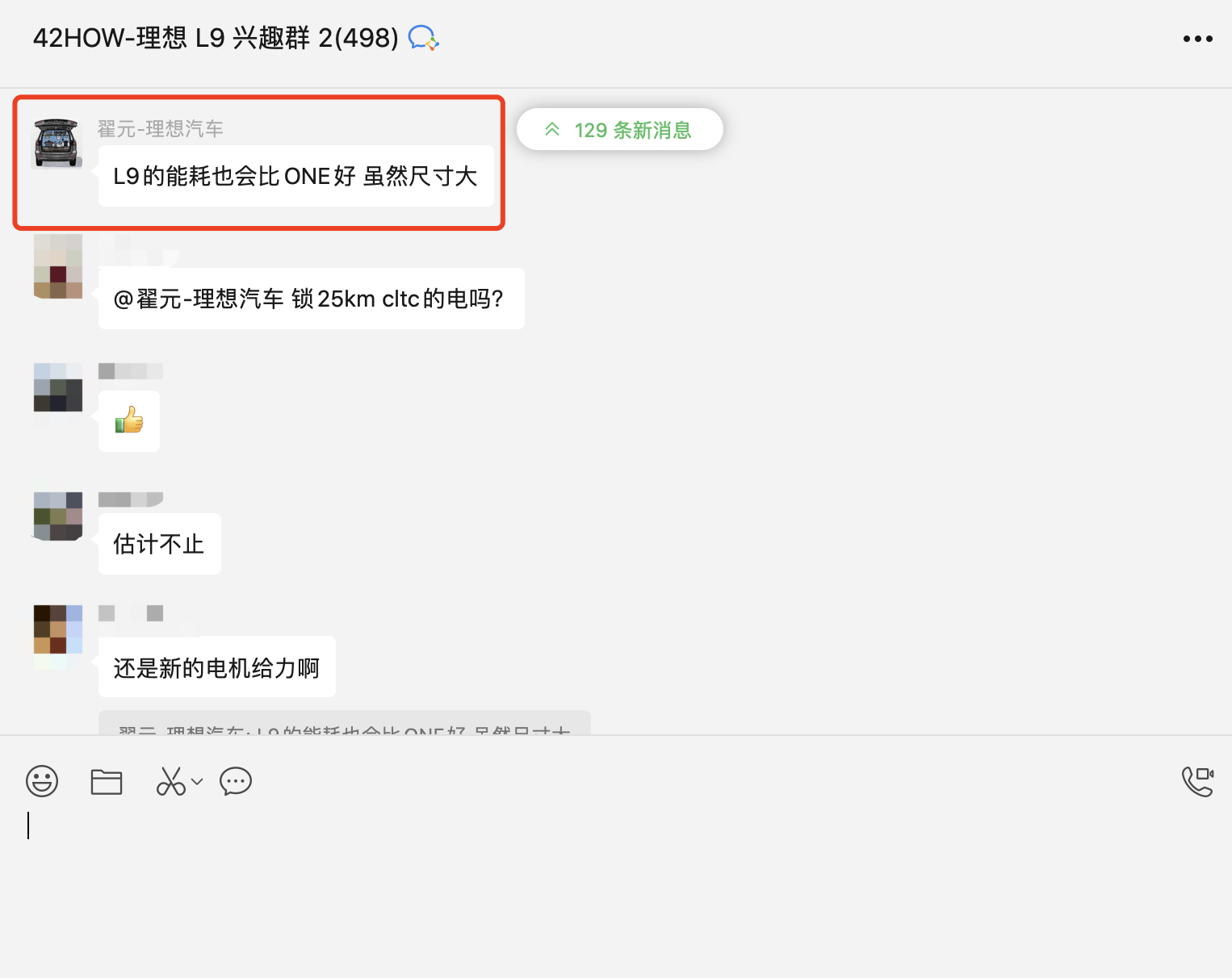
With the small expansion of the 44.5 kWh battery, the L9 CLTC electric range is 215 km. The official revealed that the actual electric range of L9 will be slightly improved compared to the ideal ONE.
Then the most special improvement of the ideal L9 range-extending system is its range control strategy.
During the development of the ideal ONE, the development team of the ideal range-extending system has accumulated a lot of valuable experience, while also conducting some leading exploratory attempts in the industry.
One of the accumulations is refined control. For a certain power demand of the vehicle’s driving motor, whether the generator’s output power is higher than the demand and the excess energy overflows into the battery, or if there is not enough power generated, the energy will have more loss when it comes out of the battery than if it were supplied directly to the motor by the range extender.
Therefore, one of the keys to improving energy efficiency during the development of the range-extending system is to make the generator’s output power match the power required by the vehicle’s motor as closely as possible.
For example, in the early development process, if the driving motor requires a power of 50 kW, the engineer will calculate the output power the generator needs to provide according to the simulated loss rate data. The calculated data may be 60 kW.
However, the power loss rate in real-world scenarios deviates from simulated data. There will be times where the generated power does not match the power required by the driving motor, either generating too much or not enough, decreasing the system’s energy efficiency. Ideally, based on a large amount of real-world data collected, the optimal control strategy under different operating conditions was specifically analyzed, verified, and achieved better control strategy, which can realize more precise range-extending system control and reduce the “secondary transfer” of energy.
In addition, ideal also developed model-based predictive control. This system has more software and algorithm capabilities, which have higher requirements for the computing performance of the vehicle itself. One simple example is that the external noise reduction microphone on the vehicle will instantly monitor the ambient noise indicators, allowing the range extender to work at a higher power without affecting the overall NVH performance of the vehicle when the external environmental noise is louder, thereby providing better power preservation experience and higher energy efficiency in some scenes.
Therefore, all the external factors and internal factors mentioned earlier, under the comprehensive effect of the entire vehicle’s lightweight, aerodynamics, powertrain mechanical efficiency, range control strategy, etc., the ideal L9 will achieve better energy efficiency performance than the ideal ONE, including fuel consumption and power consumption, on the premise of larger size, larger battery, and stronger power.
Chassis Upgrade & XCU
The poor chassis quality should be one of the centralized complaints of Ideal ONE owners. The original Ideal ONE used a front MacPherson strut and a rear multi-link suspension, with average filtration and excessive aftershocks on big bumps.The chassis of the Ideal L9 has undergone a major upgrade, with a front double wishbone and rear five-link structure, as well as air springs and a CDC damping system.
Suspension is no longer a weakness
According to previous disclosures, the air spring supplier for this system is WABCO and the CDC damping system supplier is ZF. In addition, Ideal has developed its own suspension control system, which, in addition to adjusting vehicle height and damping according to vehicle speed, terrain, and driving mode, also has features common to large SUVs, such as loading mode (which lowers the body to facilitate loading and unloading luggage) and comfortable entry and exit with linked air suspension, which will be available on the L9.
However, based on our personal experience with full-size SUVs, air suspension fill and release rates are usually slow, and these two features are not very good when you’re in a hurry. Hopefully, the L9 will improve on this.
These are the configurations and features of the chassis, but one other thing to note from the official Ideal images is the system’s integration. After the use of a four-cylinder turbocharger and a double wishbone suspension, there is still the need to lay out the blue box section of the dual-motor drive system in the front horizontal space of the L9’s front cabin, which presents a certain challenge for the layout of the front cabin’s horizontal space.
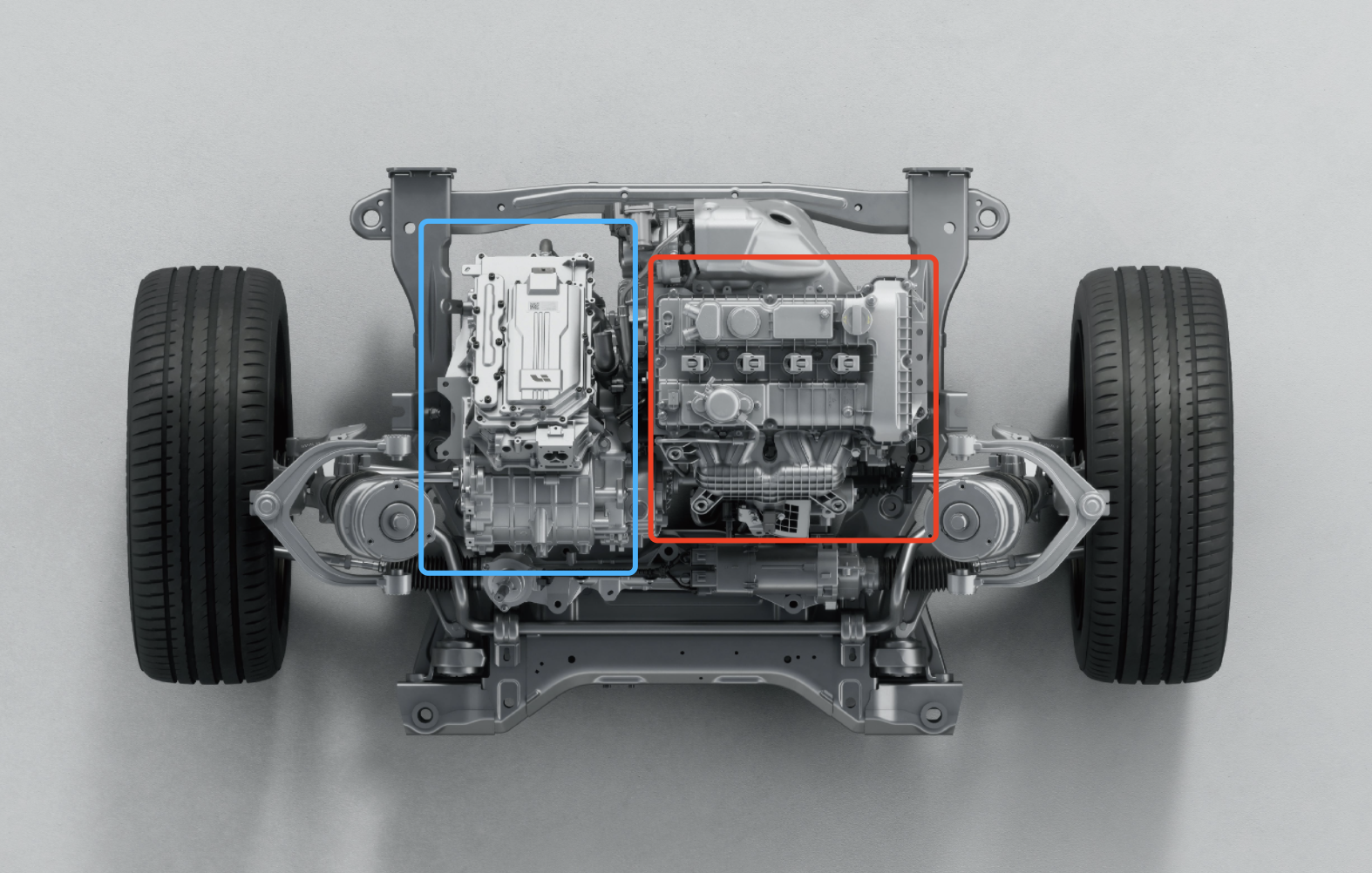
In this layout, the dual-motor system in the blue box adopts a parallel-axis mechanism, with one in front and one in the back, with the main space occupied in front of the vehicle’s front axle. This layout is expected to give the L9 more space for passengers inside the vehicle.
Self-developed controller XCU
The last piece of information is the new self-developed domain controller, for more specific information, please see our colleague @刘光腚‘s post in the community (in Chinese).
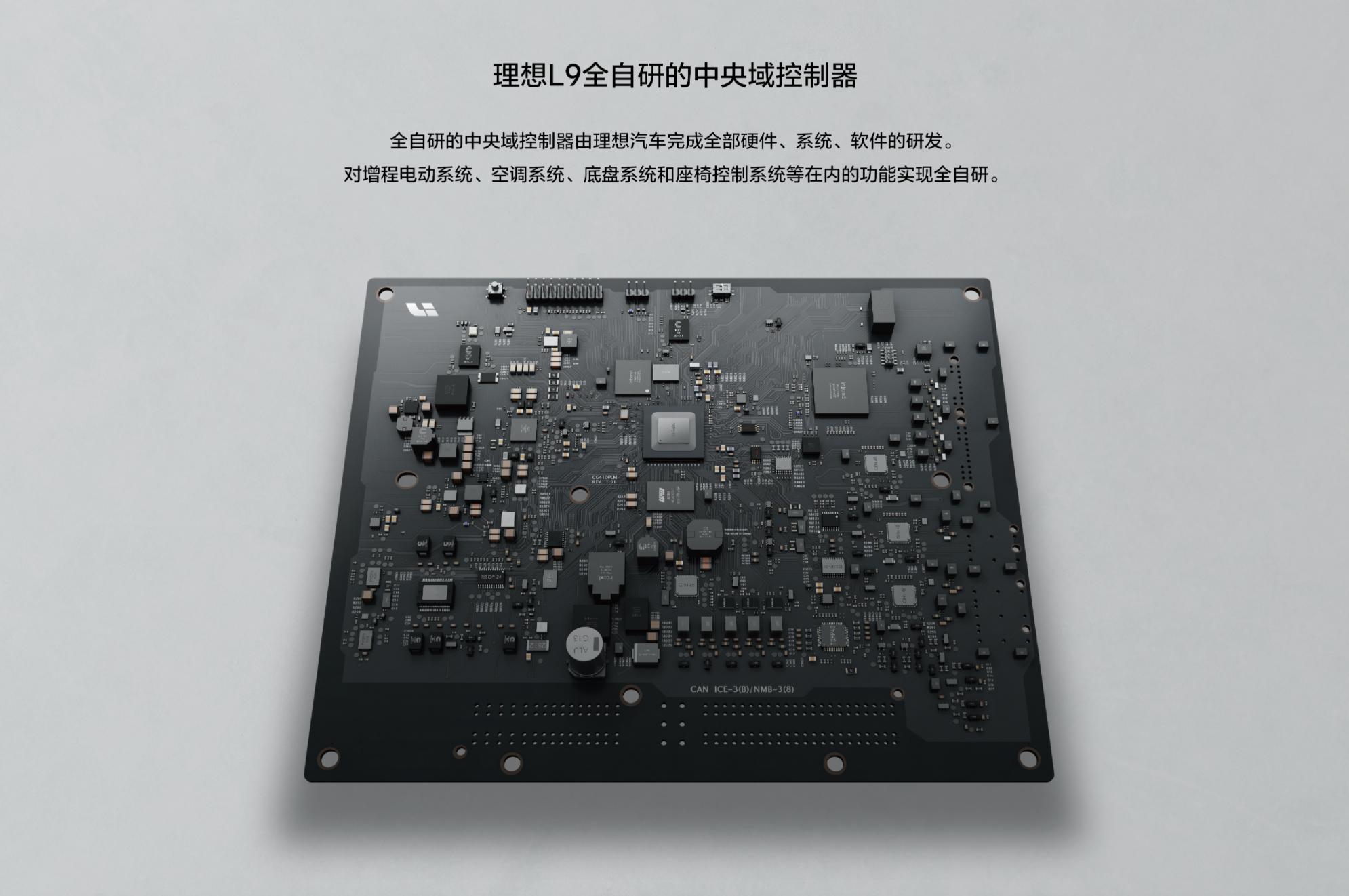
In short, the new controller, from hardware to system to software, is all self-developed by Ideal Automotive, with significantly improved operational performance over previous versions, providing higher support for OTA performance, vehicle control, and other aspects.
Conclusion
These are our interpretations of the official information released for the third phase of the Ideal L9. Currently, leaked information includes the exterior, interior, intelligent cabin, turbocharging system, and chassis configurations. Those interested in previous content can refer to our previous articles:
-
Ideal L9 Interior Official Announcement Part Two: Pixel-Level Detail Interpretation– We’ve Dug Up the Second Wave of Leaks on Ideal L9
-
We’re Continuing to Dig up the Third Wave of Leaks on Ideal L9
Finally, welcome to join our Ideal L9 Circle, where you’re also welcomed to click the link for more information, ideas, suggestions, and discussions on Ideal L9.
This article is a translation by ChatGPT of a Chinese report from 42HOW. If you have any questions about it, please email bd@42how.com.
